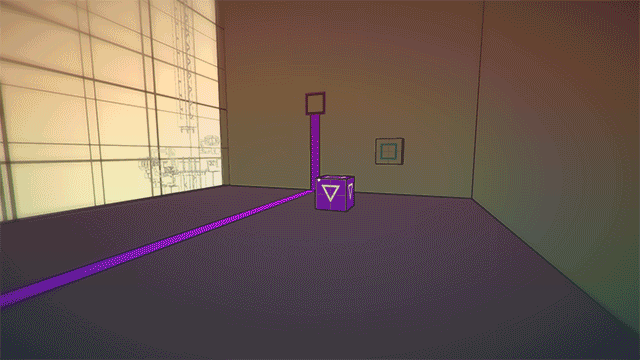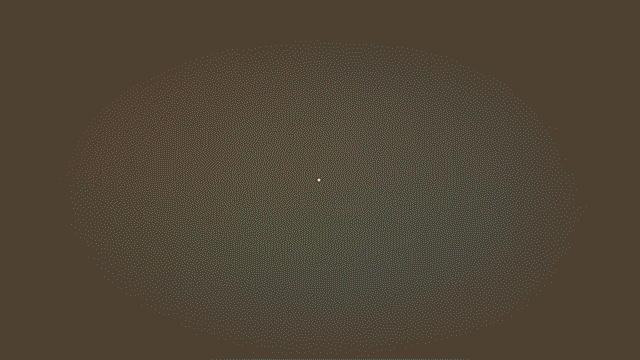This is what this café looks like, at this moment,” said Willy Chyr, a video game developer based out of Hyde Park. Chyr gestured to the windowpane across from us. “But what if we rotate it so that this is the floor? What would happen then?” The answer, unfortunately, is anticlimax, as Chyr quickly learned while developing spaces for his 3-D first-person game, “Relativity.” Our tables and chairs simply clumped up in the corner of the café the first time we decided to change gravity’s direction.
“Relativity” takes place across an amalgam of sparse chambers. Most are separated with locked doors, themselves linked to trigger plates that accept different color-coded boxes as power sources. Tremendous pane-glass windows pierce every room, letting in raking light from the outside world. Each space indexes M.C. Escher’s dizzying architecture, and each puzzle relies on the same bottomless visual rhetoric. The results literally drop the earth out from beneath you.
To introduce “Relativity’s” core mechanic, Chyr shepherds the player into rooms with no apparent exit. Upon running into your first wall, “Relativity” prompts you to click once. You are now standing on the wall. The door had actually been nested in the ceiling, all along. First rule: look up. Second rule: there is no up, objectively speaking.
“In my game, height is meaningless,” insists Chyr. “It’s above you, but as soon as you rotate, it’s below you—so you don’t even see it!” In “Relativity,” the player moves within a total of six different spatial orientations, each of which is marked with a color. Clicking on a surface causes the player to stand on that surface. In an early puzzle, Chyr presents the player with two boxes: one blue, one purple. A purple trigger panel halfway up the “wall” powers a purple-banded door. Chyr encourages the player to lift the purple box up against the trigger panel. But as soon as you step away to enter the now-opened door, the purple box slips your grip and falls, shutting the door.
The solution? Switch gravities. The “wall” on which the purple trigger panel is placed now becomes the “floor” of the blue orientation, and the player can now manipulate the blue block. By placing the blue block just to the left of the panel, and switching back to the purple orientation, you create a “shelf” on the “wall” where you can successfully stand the purple power block. This permanently fixes the door open, letting the player exit the level.
Chyr nodded along as I blundered through this particular riddle. “What you do in blue affects what happens in purple—that box takes on a different role based on where you place it!”
He admitted that in earlier iterations of “Relativity,” this kind of thinking didn’t quite come through. “The puzzles I made in that version were far less interesting, because all those ones were very execution-based. I had one where there’s a bridge, and the bridge was rotating, so when you stood on it, you constantly had to be rotating the room around its axis. Otherwise you’d fall off!” He cleared away fiddly default physics, honing in on the player’s own planning and foresight. Stressing thought process, Chyr soon arrived at the kinds of problems playtesters and fellow developers at conventions like PAX or IndieCade could chew on rewardingly.
Chyr still hasn’t been satisfied with the challenges he’s produced. “Lately I’ve been rethinking what the role of the puzzles are in the game,” he said. For the first few tutorial puzzles, it proved important that the puzzle elements come first and architecture simply embellish the principle being demonstrated. “Architecture is there to serve the puzzles when I need the player to form the right mental model,” Chyr said. “I ultimately really wanted to be just about the exploration of space.”

Chyr’s urge for exploration became breathtakingly apparent as we dropped out of my first gauntlet of puzzles, which took place beneath a pale, cream-white sky, onto a ledge levitating high above an invisible ground. I edged towards the vast, colorless expanse, calculating whether I could jump from my present platform and reach more distant surfaces.
I accidently whooshed downwards, having nudged my “W” key a tap too far. I descended past other floating structures, unopened doors—the starting points of new puzzles—one after the next.
“And that’s entirely intentional—” I half-asked, thinking I’d unwittingly slipped through an invisible wall and broken Chyr’s demo build.
“Yes.”
“—so jumping between platforms is totally okay?”
“And necessary,” offered Chyr. “Whatever you see you should be able to get to.” Chyr wrestled the character back under control to guide me to a new puzzle. Before we could arrive at our new destination, however, Chyr himself slipped. We fell further, and further, Chyr nonchalantly holding his course, until he thunked suddenly onto the very point from which he had first slipped.
I reflexively straightened my back.
“Oh—! There is no bottom!”
“There’s no bottom,” Chyr exclaimed with me. “Relativity’s” world had repeated itself as a closed loop through space.
“It’s a very logical consequence of the core mechanic,” he said. If there’s no objective up—because the player can cycle through different gravities—there ought not to be an objective down towards which the player can fall. So the ground wasn’t invisible: it simply didn’t exist in the first place. In earlier builds, Chyr admitted that he had the screen fade to black whenever the player fell, restarting them at a checkpoint earlier in time. He smiled wryly: “Which is a lot less interesting than this current solution!”
You could fall forever—in any of six different directions—but you’d always know where you were, because you’d unerringly return from where you came.
Each mind-teasing puzzle now seemed to stand between me and more of these heightless vistas; the puzzles either lock you out from a new zone or slowly initiate you to different ways of appreciating the area in which you puzzled. Chyr’s aspirations detach the challenges in “Relativity” from the actual trappings of each puzzle. The game cares less about the boxes and triggers and doors than it does about the puzzle of navigating an endlessly redoubling reality, where your comprehension shifts with every ceaseless stumble into alien space.
“I can create the illusion of infinity,” said Chyr, “without the player ever getting lost.”


Great article! I love the title too… a reference to Ender’s Game (“Remember, the enemy’s gate is down.”)? Looking forward to playing this game.